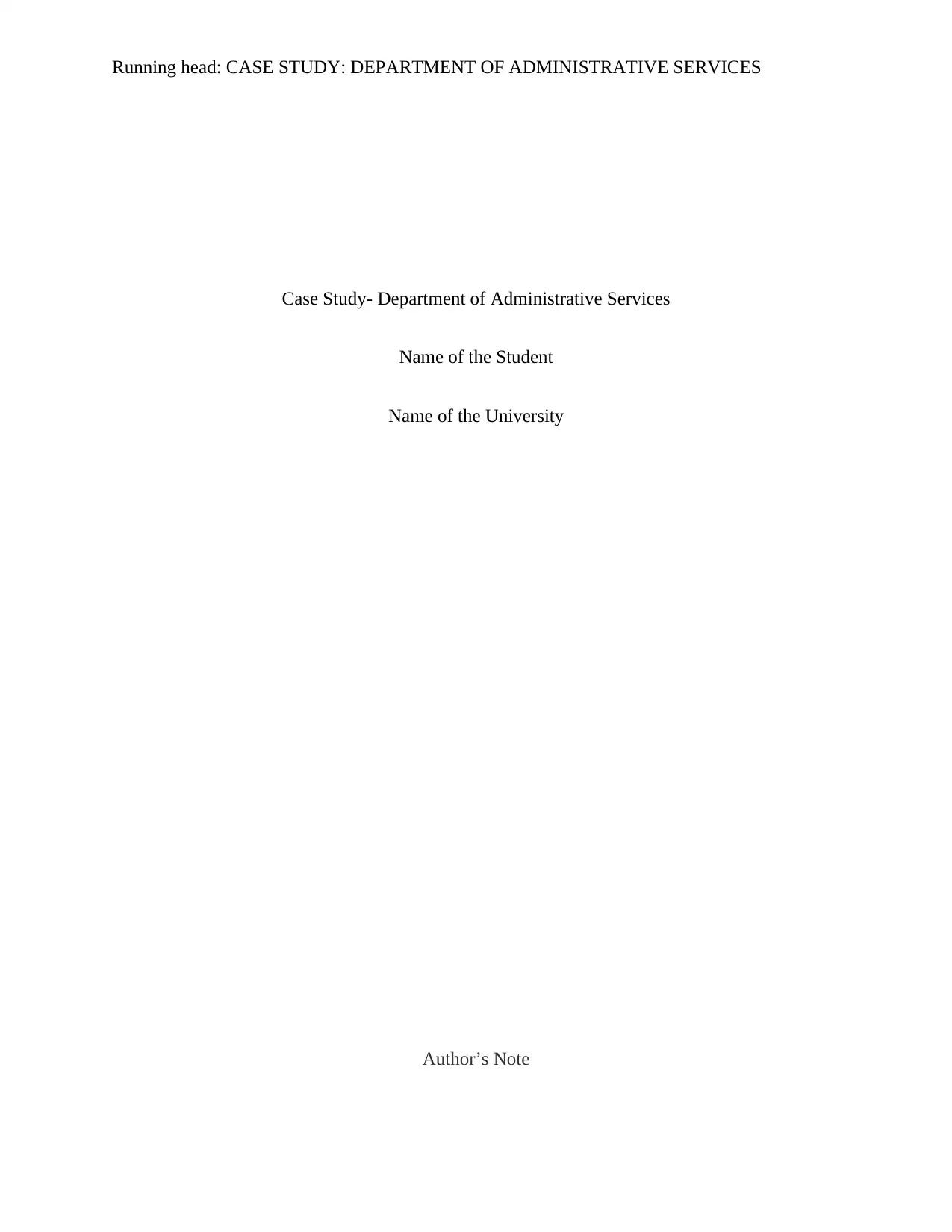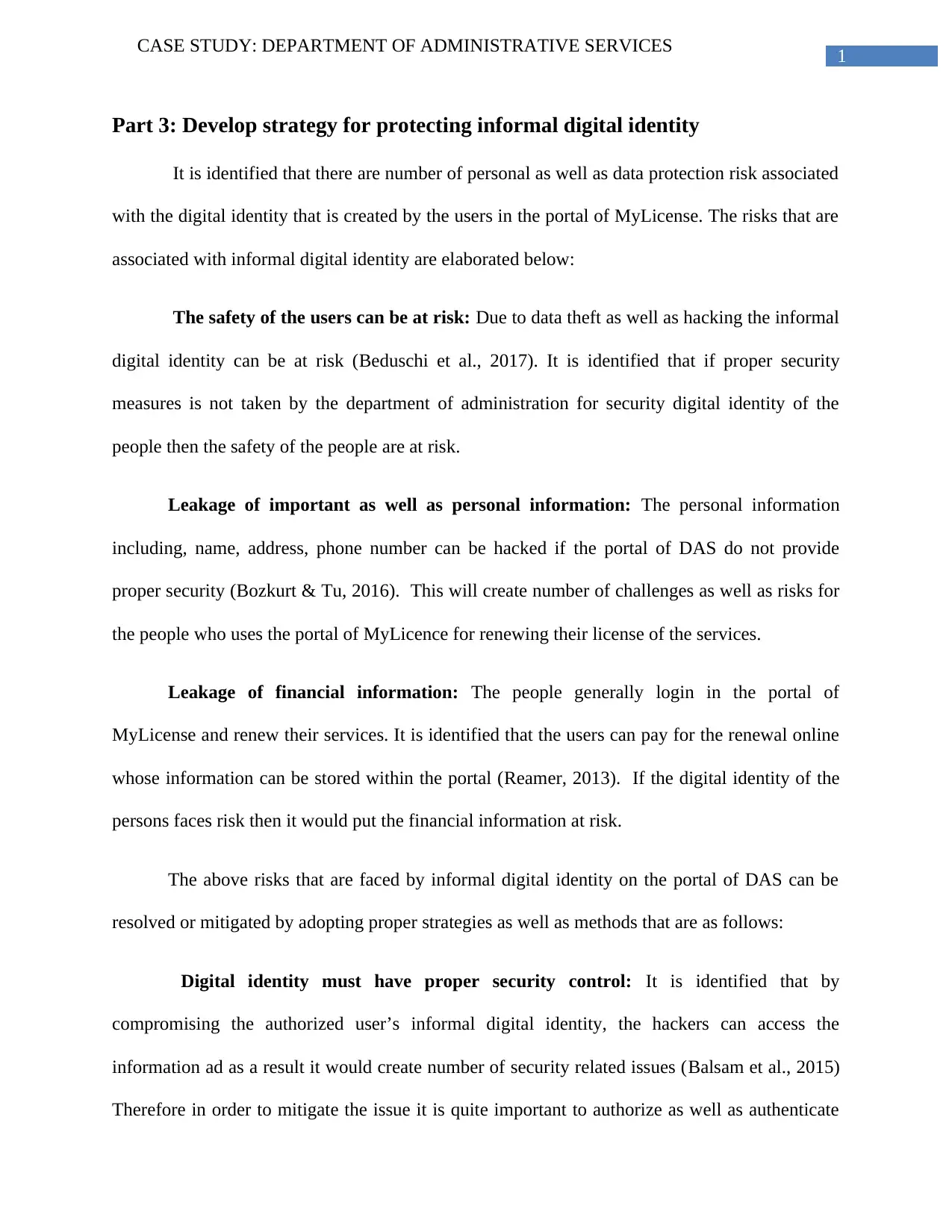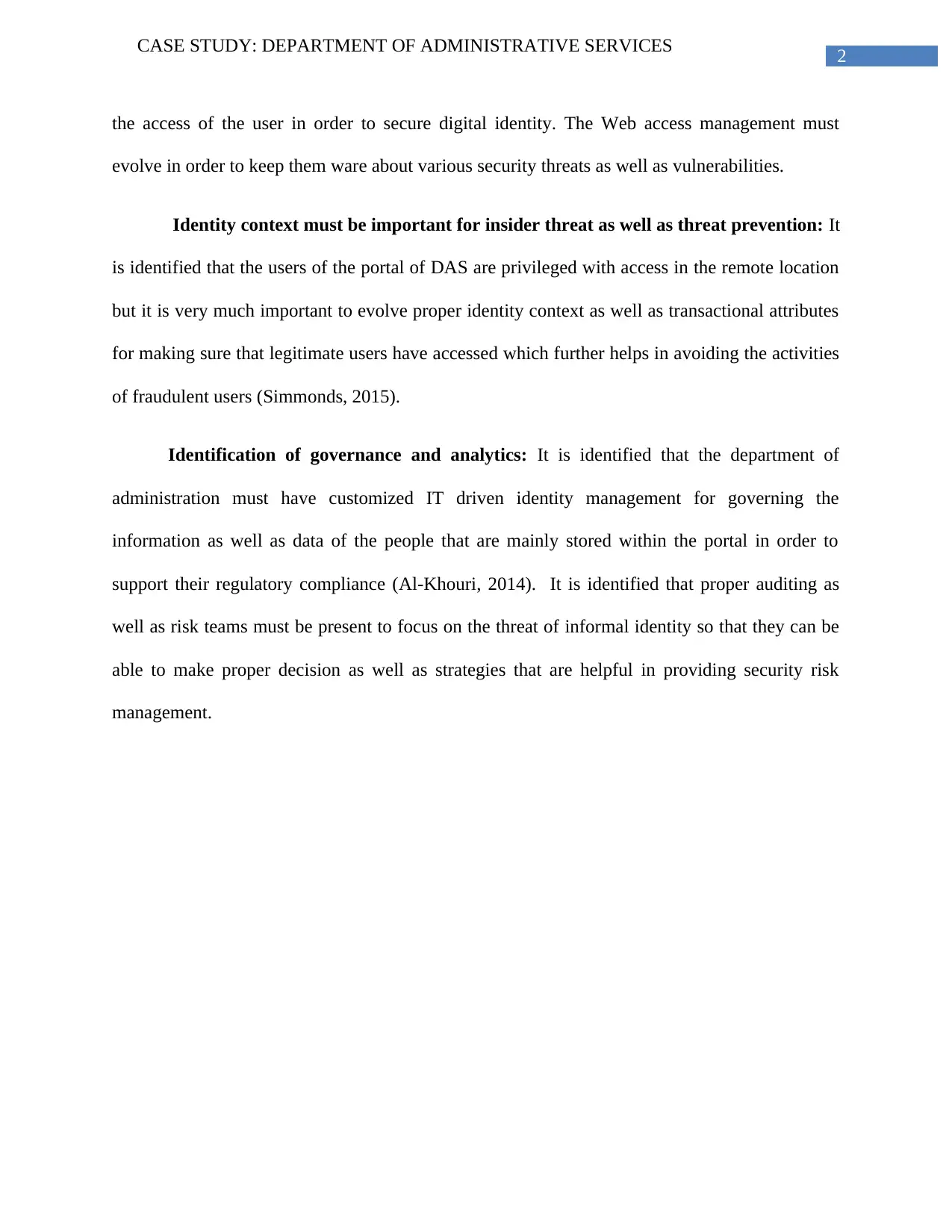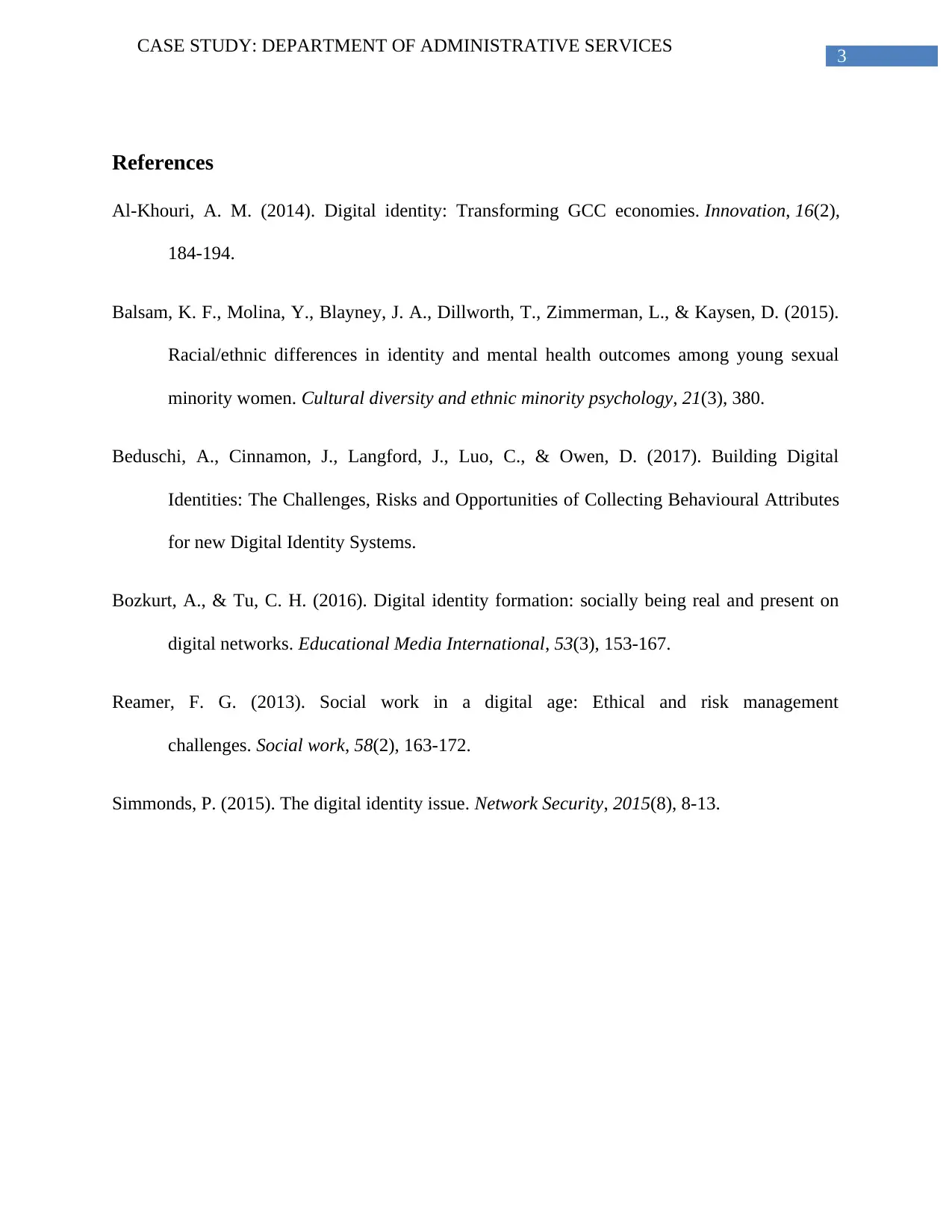Protecting Informal Digital Identity: DAS Case Study Analysis Report
VerifiedAdded on 2020/03/16
|4
|809
|184
Case Study
AI Summary
This case study focuses on the Department of Administrative Services (DAS) and the risks associated with informal digital identity within the MyLicense portal. It identifies potential threats such as data theft, hacking, and leakage of personal and financial information. The solution proposes strategies to mitigate these risks, including implementing robust security controls, evolving web access management, prioritizing identity context for insider threat prevention, and establishing governance and analytics for data management. The study emphasizes the importance of user authentication, security threat awareness, and customized IT-driven identity management to ensure regulatory compliance and effective risk management. References to relevant research papers support the analysis and proposed solutions for protecting digital identities.
1 out of 4










![[object Object]](/_next/static/media/star-bottom.7253800d.svg)